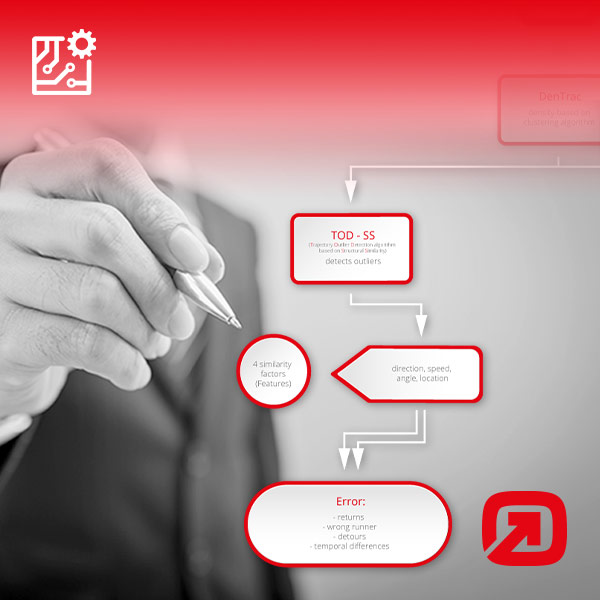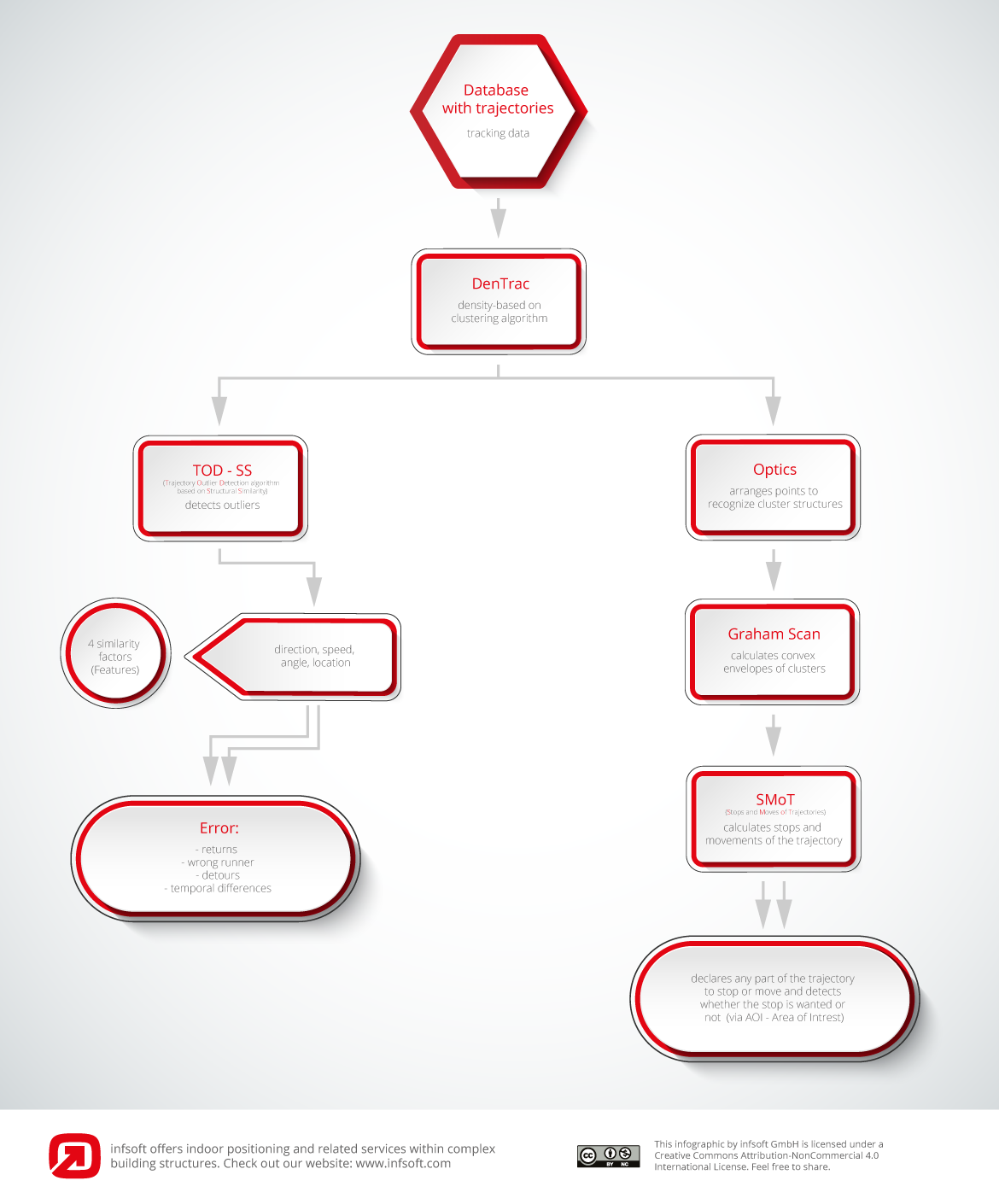We are pleased to announce that infsoft was able to successfully guide another bachelor student through his final thesis. In cooperation with the University of Applied Sciences in Munich, Ferdinand Rottmair wrote his bachelor thesis with the title “Investigation of tracking data from an indoor navigation system in logistic processes” at our company.
The goal of this thesis was to identify possible errors within any logistic process due to the movement patterns of certain objects. For this purpose, a prototype-like console program based on algorithms from motion data was created. With this program, deviations from the norm in logistics processes, such as congestion, returns, or even wrong movements can be determined. Self-defined data as well as real data were used for the verification of the program.
Information that is created by recording the movements of any object synchronously to a time component is called trajectory. Based on analyses, this can contain interesting information about the object, which is tracked using an indoor navigation system, for example. The information that is important in this bachelor thesis is about errors or outliers that need to be identified within a logistical process. For this purpose, algorithms for the step-by-step processing of the data are used.
In the first step, the trajectories of the data set are divided into individual clusters by an adaptation of the “DenTrac” algorithm, which should reflect the individual sequences within a logistic process. Subsequently, these sequences can be clustered on point level to identify so-called “AoIs” (Area of Intrest), which represent the “interesting” areas of the sequence. With the help of “AoIs” there are different methods for clustering the trajectory which can provide information about the direction and speed of the respective object.
In addition, the “TOD-SS” algorithm, which decomposes the individual trajectories and can detect outliers in speed, location, direction, and sum of angles by analyzing the feature values of these trajectories on a mathematical level. These analyzing algorithms are combined with conventional algorithms, such as the “Graham scan”, which helps to unify the clustered point clouds corresponding to an AoI within a convex envelope, or the Ignore method, which calculates whether a point is located within a polygon to determine the proportion of a detected cluster that corresponds to an “AoI”.
The thesis also deals with the performance of the different algorithms used and presents development prospects and application scenarios.








